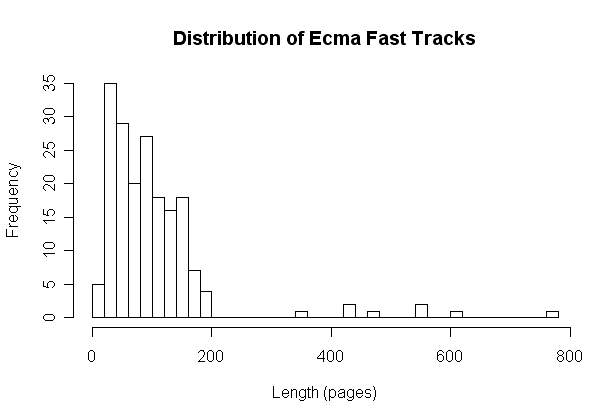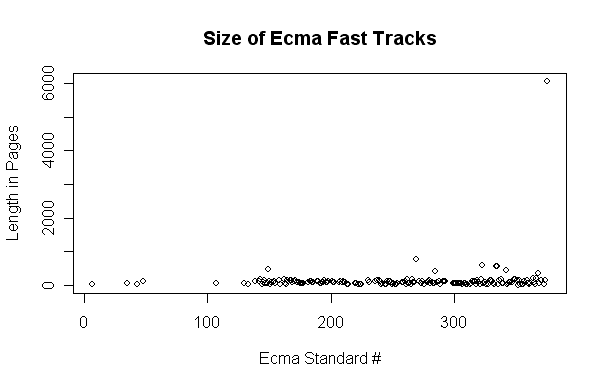Another neo-colonialist press release from Microsoft’s CompTIA lobbying arm, this time inveighing against South Africa’s adoption of ODF as a national standard. One way to point out the absurdity of their logic is to replace the reference to ODF with references to any other useful standard that a government might adopt, like electrical standards.
When we do this, we end up with the following.
South Africa Electrical Current Adoption Outdated
South Africa’s recent adoption of the 230V/50Hz residential electrical standard represents a tact that will blunt innovation, much needed for their developing economy. The policy choice – which actually reduces electrical current choice – runs contrary to worldwide policy trends, where multiple electrical standards rule, thus threatening to separate South Africa from the wealth creating abilities of the global electrical industry.
For MonPrevAss, the Monopoly Preservation Association, the overall concern for the global electrical industry is to ensure that lawmakers adopt flexible policies and set policy targets rather than deciding on fixed rules, technologies and different national standards to achieve these targets. Such rigid approaches pull the global electrical market apart rather than getting markets to work together and boost innovation for consumers and taxpayers. “The adoption sends a negative signal to a highly innovative sector” says I.M. Atool, MonPrevAss’s Group Director, Public Policy EMEA.
The “South African Bureau of Standards” (SABS) approved the 230V/50Hz residential electrical standard on Friday 18 April as an official national standard. This adoption, if implemented, will reduce choice, decrease the benefits of open competition and thwart innovation. The irony here is that South Africa is moving in a direction which stands in stark relief to the reality of the highly dynamic market, with some 40 different electrical current conventions available today.
“Multiple co-existing electrical standards as opposed to only one standard should be favoured in the interest of users. The markets are the most efficient in creating electrical standards and it should stay within the exclusive hands of the market”, I.M. Atool explains.
In light of the recent ISO/IEC adoption of the Microsoft 240V/55Hz electrical standard, the South African decision will not lead to improvements in the electrical sector. MonPrevAss urges Governments to allow consumers and users to decide which electrical standards are best. We fear that the choice of just one electrical standard runs the risk of being outdated before it is even implemented, as well as being prohibitively costly to public budgets and taxpayers.
Governments should not restrict themselves to working with one electrical standard, and should urge legislators to refrain from any kind of mandatory regulation and discriminatory interventions in the market. The global electrical industry recommends Governments to embrace the reality and logic of choice and to devote their energies to ensuring interoperability through this choice.
Of course, this is just a rehash of an old logical fallacy, related to the old “Broken Windows” fallacy. It is like saying heart disease is a good thing because you have such a wide choice of therapies to treat it. We would all agree that it is far preferable to be healthy and have a wide choice of activities that you want to do, rather than a wide choice of solutions to a problem that you never asked for and don’t want.
Consumers don’t want a bag of adapters to convert between different formats and protocols. That is giving consumers a choice in a solution to a interoperability problem they didn’t ask for and they don’t want. Consumers want a choice of goods and services.
Observe the recent standards war with Blu-ray and HD DVD. Ask yourself:
- Did consumers want a choice in formats, or did they want a wider choice in players and high definition movies?
- Did movie studios want a choice in formats and either the uncertainty over choosing the winner, or the expense of supporting both formats? Or did they really just want a single format that would allow them to reach all consumers?
- Did the uncertainty around the existence of two competing high definition formats help or hurt the adoption of high definition technologies in general?
- Did consumers who make the early choice to go with HD DVD, say Microsoft XBox owners, benefit from having this choice?
If every private individual, and every private business has the right to adopt technology standards according to their needs, why should governments be denied that same right? Why should they be forced to take the only certain losing side of every standards war — implementing all standards indiscriminately — a choice that no rational business owner would make?
How many spreadsheet formats does Microsoft use internally for running their business on? Why should governments be denied choice in the same field that Microsoft itself exerts its right to chose?

